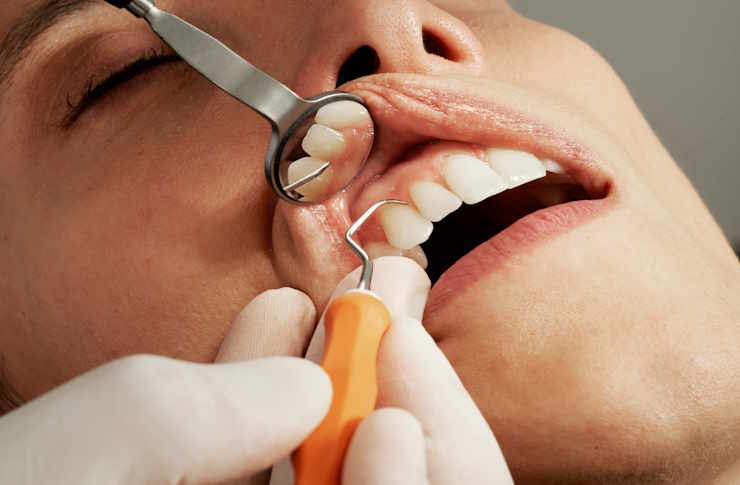Say Goodbye to Dental Bills.
Tired of avoiding the dentist due to high costs? You’re not alone. Dental work can be expensive, but it doesn’t have to be. Discover dental insurance plans that cover cleanings, checkups, crowns, and more - starting at less than the price of a coffee a day. Compare top-rated providers in minutes and find the coverage that fits your needs and budget. No medical exam, instant approval options, and peace of mind for you and your family. Don’t wait until a cavity turns into a crisis - get protected now and save big on future dental bills.

What exactly is dental insurance and how does it work?
Dental insurance is a type of healthcare coverage specifically designed to help offset the costs of dental care. Similar to medical insurance, dental plans typically involve paying a monthly premium in exchange for coverage of various dental services. Most plans operate on a 100-80-50 structure, meaning they cover 100% of preventive care (like cleanings and checkups), 80% of basic procedures (such as fillings), and 50% of major treatments (like crowns or bridges).
When you visit a dentist within your plan’s network, you’ll generally pay a lower out-of-pocket cost. Some plans also offer coverage for out-of-network providers, though usually at a higher cost to you. By spreading the risk across many policyholders, insurance companies can negotiate lower rates with dental providers, ultimately saving you money on necessary dental care.
What types of dental procedures are typically covered?
Dental insurance plans generally cover a wide range of procedures, focusing on both preventive care and treatment of dental issues. Here’s a breakdown of what you can typically expect:
-
Preventive care: Regular cleanings, checkups, and X-rays are usually covered at 100%.
-
Basic procedures: Fillings, simple extractions, and sometimes root canals are often covered at 80%.
-
Major procedures: Crowns, bridges, dentures, and more complex oral surgeries are usually covered at 50%.
-
Orthodontics: Some plans offer coverage for braces or clear aligners, often with a lifetime maximum benefit.
It’s important to note that coverage can vary significantly between plans, so always review the details of any policy you’re considering to ensure it meets your specific needs.
How much does dental insurance typically cost?
The cost of dental insurance can vary widely depending on factors such as your location, the level of coverage, and whether you’re purchasing an individual or family plan. However, many affordable options are available, with some plans starting as low as $1 per day.
Here’s a comparison of some popular dental insurance providers and their typical costs:
| Provider | Plan Type | Monthly Premium (Individual) | Monthly Premium (Family) | Annual Maximum Benefit |
|---|---|---|---|---|
| Delta Dental | PPO | $30 - $50 | $80 - $150 | $1,000 - $2,000 |
| Cigna | DHMO | $20 - $40 | $60 - $120 | No annual maximum |
| MetLife | PPO | $35 - $55 | $90 - $160 | $1,500 - $2,500 |
| Guardian | PPO | $25 - $45 | $75 - $140 | $1,000 - $1,500 |
| Humana | PPO | $20 - $40 | $70 - $130 | $1,000 - $1,500 |
Prices, rates, or cost estimates mentioned in this article are based on the latest available information but may change over time. Independent research is advised before making financial decisions.
Are there any waiting periods for dental insurance coverage?
Waiting periods are a common feature of many dental insurance plans, especially for more extensive procedures. These periods are designed to prevent people from purchasing insurance only when they need expensive treatments and then canceling afterward. However, the duration and applicability of waiting periods can vary significantly between providers and plans.
Typically, preventive care like cleanings and checkups have no waiting period, allowing you to use these benefits immediately. Basic procedures often have a 3-6 month waiting period, while major procedures might require you to wait 6-12 months before coverage kicks in.
The good news is that many insurers now offer plans with no waiting periods for certain services. These “no wait” plans can be especially beneficial if you need dental work soon after purchasing insurance. When comparing plans, be sure to consider the waiting periods alongside other factors like cost and coverage levels.
What are some unique facts about dental insurance in the United States?
Dental insurance in the United States has some interesting quirks and features that many people might not be aware of:
-
Dental insurance is separate from medical insurance: Unlike in some countries, dental coverage is typically not included in standard health insurance plans in the US.
-
Annual maximums are common: Most dental plans have an annual maximum benefit, often around $1,000 to $2,000. Once you reach this limit, you’re responsible for all costs for the rest of the year.
-
In-network savings can be substantial: Using an in-network dentist can often save you 30-40% on dental procedures, even if you’ve maxed out your benefits for the year.
-
Preventive care is emphasized: Many plans cover preventive care at 100% to encourage regular check-ups and cleanings, which can prevent more costly issues down the line.
-
Group plans often offer better value: Dental insurance obtained through an employer is typically less expensive and may offer better coverage than individual plans.
How can I compare and choose the best dental insurance plan for my needs?
Choosing the right dental insurance plan requires careful consideration of your specific needs and circumstances. Here’s a comparison of some top dental insurance providers to help you make an informed decision:
| Provider | Plan Types | Standout Features | Network Size | Best For |
|---|---|---|---|---|
| Delta Dental | PPO, HMO | Large network, flexible plans | 156,000+ dentists | Overall coverage and flexibility |
| Cigna | DHMO, PPO | No annual maximums on DHMO plans | 93,000+ dentists | Affordable preventive care |
| MetLife | PPO | High annual maximums | 140,000+ dentists | Comprehensive coverage |
| Guardian | PPO, DHMO | Loyalty benefits increase over time | 120,000+ dentists | Long-term value |
| Humana | PPO, DHMO | Bundle options with health insurance | 270,000+ dentists | Integrated health and dental coverage |
Prices, rates, or cost estimates mentioned in this article are based on the latest available information but may change over time. Independent research is advised before making financial decisions.
When comparing plans, consider factors such as monthly premiums, annual maximums, coverage percentages for different types of procedures, waiting periods, and network size. Also, think about your specific dental needs. If you require only basic preventive care, a lower-cost plan with good coverage for cleanings and check-ups might be sufficient. If you anticipate needing more extensive work, look for plans with higher coverage percentages for major procedures and higher annual maximums.
Don’t forget to check if your current dentist is in-network for the plans you’re considering, as this can significantly impact your out-of-pocket costs. Lastly, some providers offer online tools to help you compare plans and get instant quotes, making it easier to find the best fit for your needs and budget.
In conclusion, dental insurance can be a valuable tool for managing your oral health expenses and ensuring regular care. By understanding how these plans work and carefully comparing your options, you can find coverage that helps you say goodbye to hefty dental bills while maintaining a healthy smile. Remember, investing in preventive care and having insurance to cover unexpected issues can save you significant money and stress in the long run.




